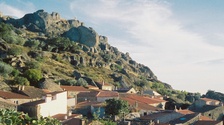Znajdź nauczycieli angielski
Shane
Japanese used in N64 video games
I'm thinking about learning a little Japanese and am wondering what I might expect to see in older console games. I have games like Super Mario 64 and Mystical Ninja Starring Goemon.
For example: http://themushroomkingdom.net/images/j-e/sm64_letter_jp.jpg
Could someone tell me, are these characters all Hiragana, Kanji, or Katana? I just want some idea of what I'm getting into here. Plus I think it would be fun to learn an Asian language. I'm practicing the Hiragana now.!
Thanks for your help!
ありがとう!
8 gru 2015 04:03
Odpowiedzi · 3
First, I’ll just transcribe the text in that picture:
おしろへ あそびに
きてください。
ケーキを つくって
まってます。
ーピーチよりー
Translated, it would be:
Please come to my castle to play.
While making a cake, I’ll be waiting.
ーFrom Peachー
As for the syllabaries used in the Japanese version, it’s all hiragana and katakana in that picture; no kanji. Everything in the picture is in hiragana except for ケーキ (cake) and ピーチ (peach), which are in katakana. You’ll tend to find most older games are like this (with no kanji), usually because of a combination of technical limitations (there are a lot of kanji out there!) and making it easier for young children to read. However, Japanese usually has no spaces in its sentences (except for the built-in space in punctuation like quotation marks, commas, and periods). For text with only hiragana and katakana in it, this would be extremely difficult to read, which is why they usually add a space after particles in such text (like in your picture above).
To illustrate, this is how your above picture would normally look in Japanese (written with kanji):
お城へ遊びにきてください。ケーキを作って待ってます。
While it would look like this written with only kana:
おしろへあそびにきてください。ケーキをつくってまってます。
With the all kana version, it’s a lot harder to see where words begin and end than with the kanji version.
Anyways, hope this helps!
8 grudnia 2015
I think you shouldn't play those games to learn Japanese, you won't be able to listen nor speak Japanese just by reading those things. If you want to improve your Japanese with games then only the games with voices and unreal-time cutscenes can help you do so (Persona 4 for example). But those games always have kanji, so it might be a problem for you. I myself sometimes do learn by playing games, but it's because I'm done with Kanji so I have a different feeling when I see a Japanese text. If you don't know like 2k+ Kanji then I suppose it will be super frustrating when you play JP games, trust me, because I experienced that.
So...you'd better master Kana first, and then try learning Japanese in a normal way (I don't mean using textbooks), you can try japanesepod101.com, it's pretty good in my opinion. You can only learn from games when you have a decent knowledge of the language and 2k+ kanji. Don't do it now, or it will just be a waste of time.
8 grudnia 2015
Nadal nie znalazłeś/łaś odpowiedzi?
Napisz swoje pytania i pozwól, aby rodzimi użytkownicy języka ci pomogli!
Shane
Znajomość języków
chiński (mandaryński), angielski, niemiecki, japoński, rosyjski, hiszpański
Język do nauczenia się
niemiecki, japoński, rosyjski, hiszpański
Artykuły, które również mogą ci się spodobać

The Power of Storytelling in Business Communication
41 głosy poparcia · 9 Komentarze

Back-to-School English: 15 Must-Know Phrases for the Classroom
28 głosy poparcia · 6 Komentarze

Ten Tourist towns in Portugal that nobody remembers
58 głosy poparcia · 23 Komentarze
Więcej artykułów
